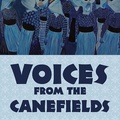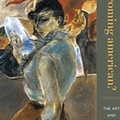With their long hair, multi-cultural ethnicity, and burgeoning artistic talents, Kip Fulbeck was occasionally mistaken for Dan Kwong back in the early 1990s. “I considered this a compliment because Kip’s a real good looking guy!” recalls Kwong laughingly. Today, both are well-established, extremely talented artists, whose paths continue to cross in their works exploring culture and identity, and being Hapa.
Combining eloquence, passion, and a generous sense of humor, Dan Kwong has been described as a “master storyteller” whose performances are noted for its keen insight, striking visuals, and dynamic physicality. He has been performing as a visual and performing artist, writer, and teacher since 1989, through unique storytelling, multimedia, martial arts, athletics, poetry, and music.
Drawing upon his own life experiences as a Japanese-Chinese-American male, his extraordinary body of work explore the many facets of identity, including culture, class, race, gender, sexuality, and nationality. “Growing up with a Chinese-Japanese heritage (during a time when it was rather rare) meant that we automatically did not fit into the usual categories or labels,” says Kwong. “This gave me a sense of freedom to be unconventional, open-minded, to find my own path in life, and to combine things that usually are not combined. My performance art has often reflected this—I have mixed baseball with iaido (Japanese sword technique) with poetry with slide projection.”
“We were an unusual family (in yet another way) because the arts were a regular part of our daily life,” recalls Kwong. “I grew up in an environment surrounded by art and artists. My father was a photographer; my mother took up ceramics, then weaving. One of our closest family friends was a mixed media sculptor. Therefore, it is not strange for me to be doing what I do. Everyone in my family does something creative; I am simply the one who pursues art as an occupation.”
Growing up in a multi-cultural ethnic family environment, Kwong recalls identifying most strongly with his American/U.S. culture. “For better or worse, I grew up in front of a TV set (need I say more?),” remembers Kwong. “As a young person I also identified strongly with my Japanese heritage, mainly because my Nisei mother shared a lot of it with us and because she was the person raising us. It wasn’t until I was a young adult that I made a conscious decision to reclaim a connection with my Chinese heritage. It was something that I could tell I wanted,” explains Kwong. “I began traveling to China, as well as looking at the things in my life that had made me feel separate from it. Nowadays I feel equally connected to both my Chinese and Japanese heritages. It’s nice.”
Kwong has toured extensively since 1990, performing at venues all over the world, including the United States, England, Kong Kong, Thailand, Cambodia, Indonesia, Mexico, and Canada. “The most striking insight I have gained from international travel is how thoroughly American I am, and how much my work reflects and speaks to the experience of being an ‘American’,” says Kwong. “At the same time I have found universality in the ways that my work addresses the struggles of any individual to try and make sense of the craziness of our societies, no matter where they come from. For example, I tell a story about my lonely Chinese grandfather that has elicited nods of familiarity from people of completely different backgrounds and heritages who understand the sweet sadness of the family oddball/outcast.”
Kwong’s groundbreaking collection of performance work is captured in the book, From Inner Worlds to Outer Space: The Multimedia Performances of Dan Kwong, a compilation of scripts from his more memorable performances. His creative process begins with research. “Since my work is usually autobiographical, I reflect on my own memories about the topic. I collect news articles, do research in libraries (I love libraries!), search the Internet, ask friends or family members for their recollections related to the topic. I listen to music that seems connected to the topic by its lyrics or by its feeling or by chronology,” says Kwong. “I will then draw pictures, make prop objects, and buy props (shopping!). I start writing. Then I edit, combine, re-combine and re-combine, over and over. I develop any audio-visual elements.” The final element is feedback from trusted colleagues, and rehearsal. “If there’s one basic concept I keep learning and re-learning, it’s to trust the ‘creative flow’; to trust that my mind can and will eventually sort things out, even when things look hopelessly confused and chaotic,” Kwong says.
For Kwong, humor is a strategic element of communication through his performances and their revealing narratives. “Giving people a chance to laugh occasionally during a performance helps them release tension and keep their minds open and refreshed. Then they are better able to ‘hear’ the more difficult or challenging topics. Finding the right balance, the right rhythm and timing of humor and seriousness is a basic challenge in shaping successful communication,” explains Kwong. “I frequently use sarcastic humor as a tool to defuse the numbness and anger people often feel about heavily-charged socio-political topics,” says Kwong. “But it is like a spice; it must be used with discretion. A little here, a little there, but not too much; otherwise it can have a negative effect on both performer and audience by closing off the heart to sincerity.”
Kwong continues to tour and perform on the topic of cultural identities, but his lifelong goal is to become the first performance artist in space. However, “Performance artist Laurie Anderson has a huge advantage there. She’s already worked with NASA. I’m just a wannabe in comparison.” Nonetheless, keep your eyes on the skies for an orbiting Kwong one of these days.
* This article was originally published on the Japanese American National Museum Store Online.
© 2006 Japanese American National Museum







